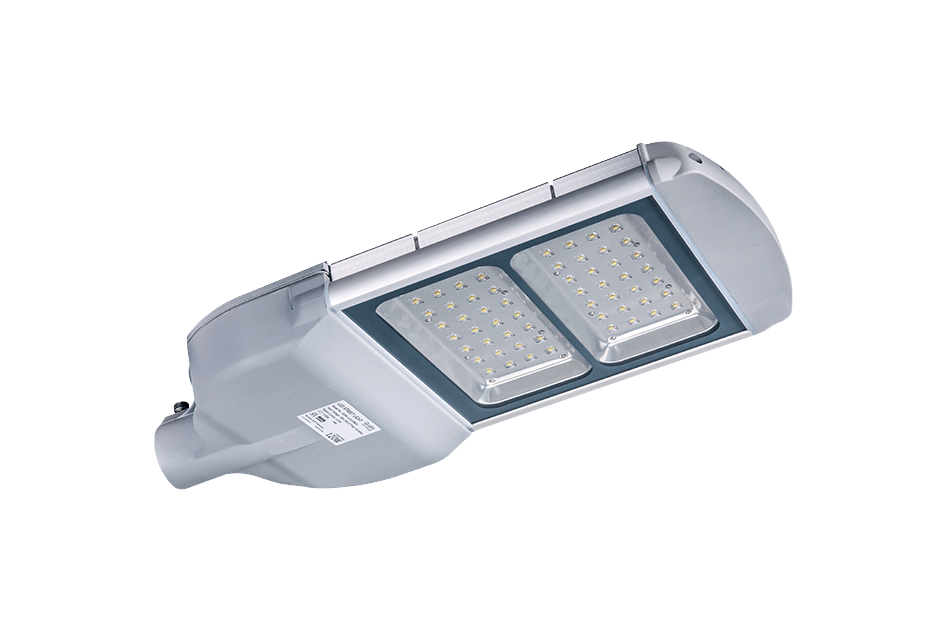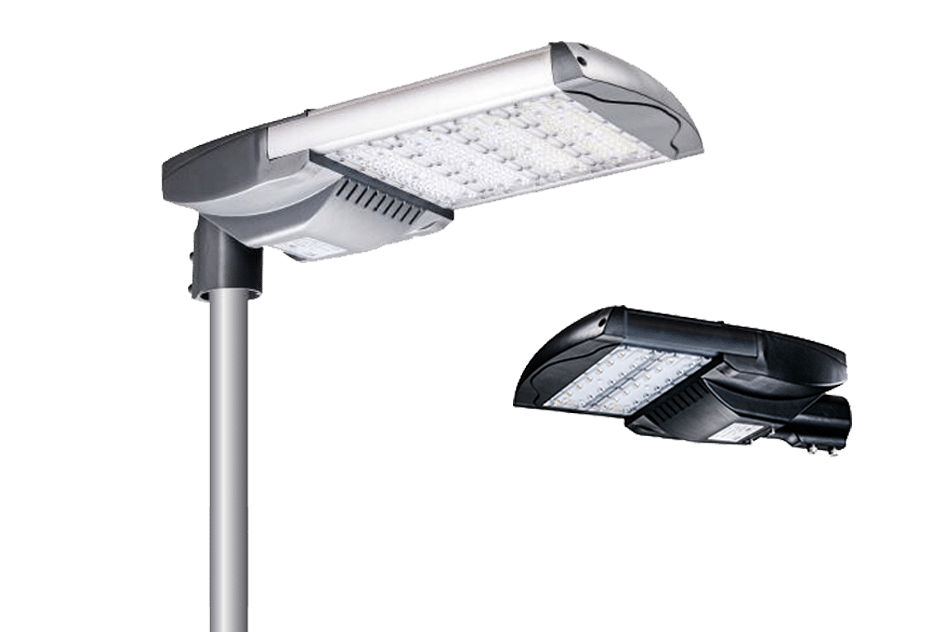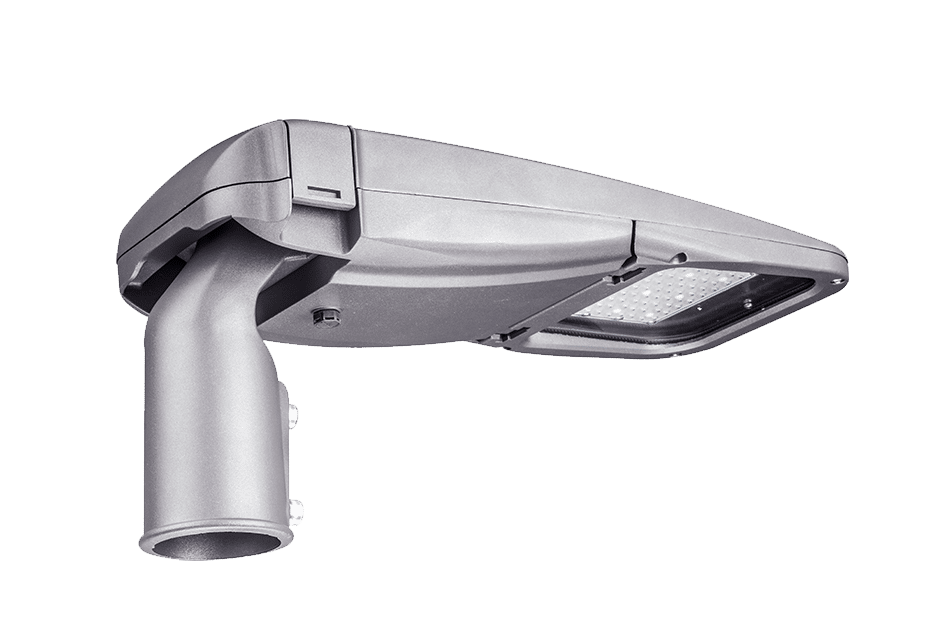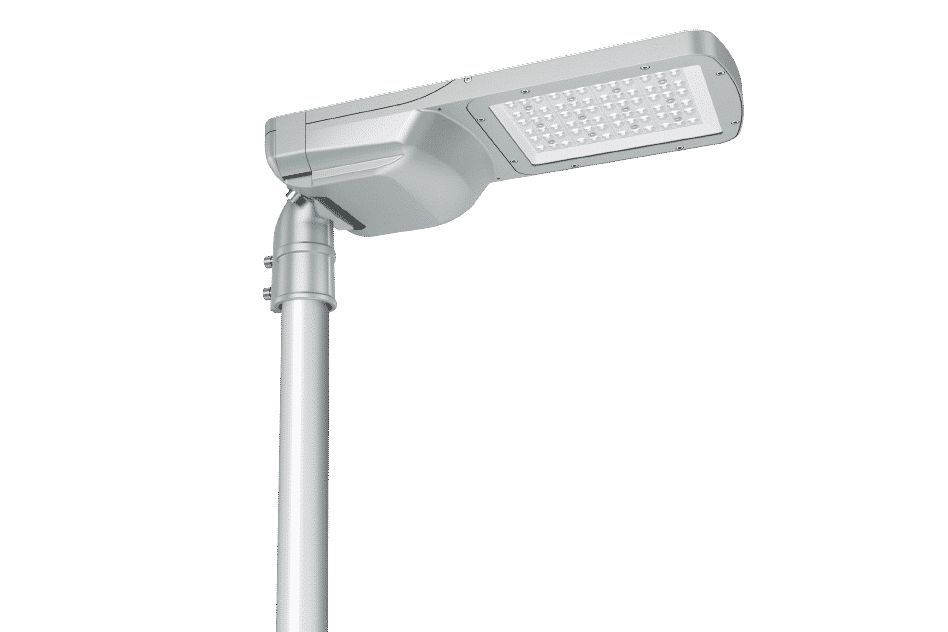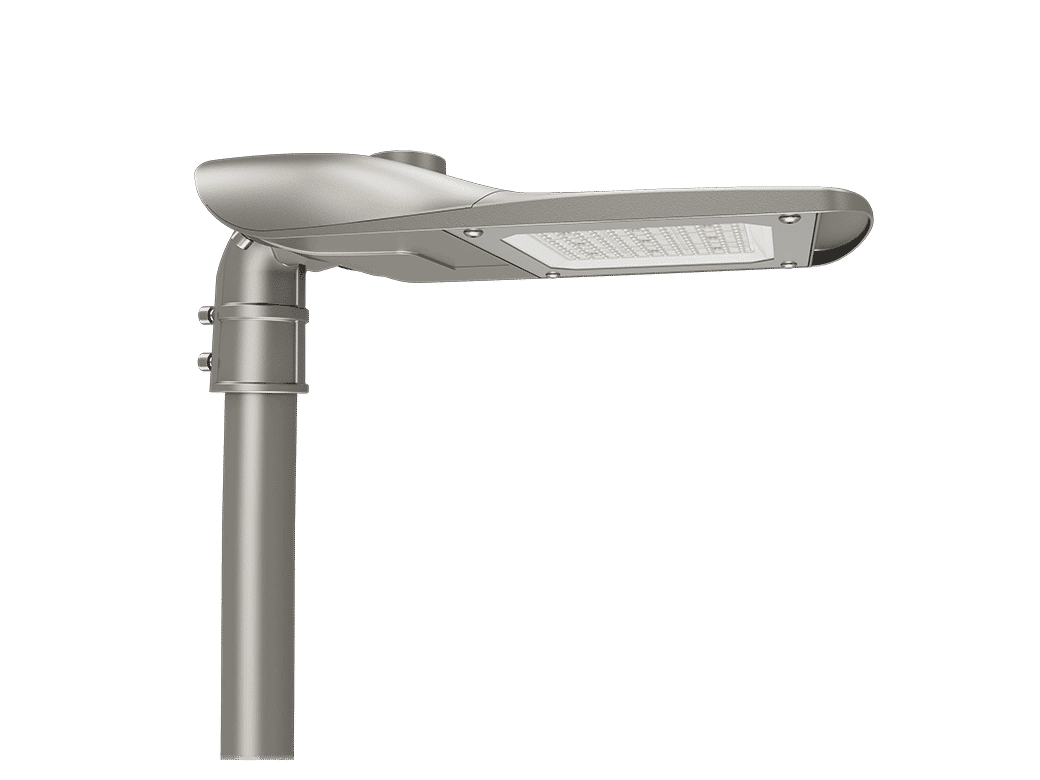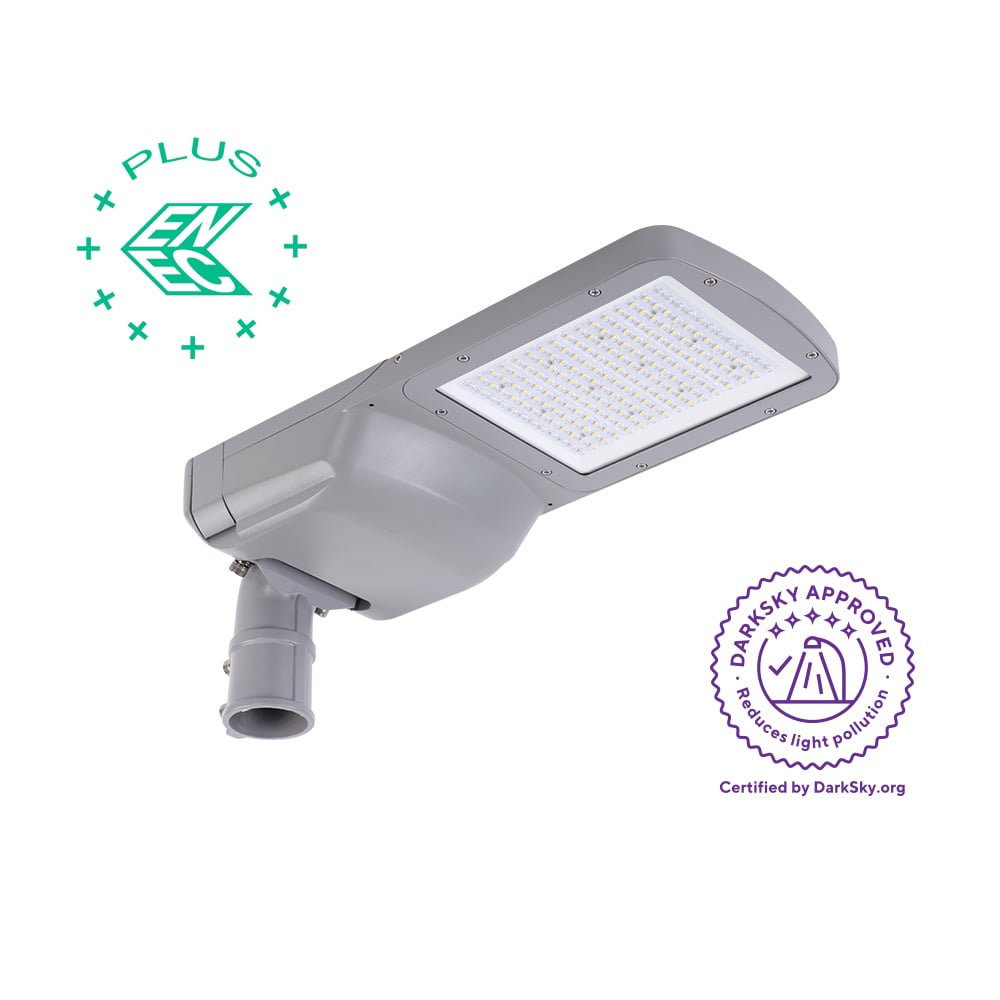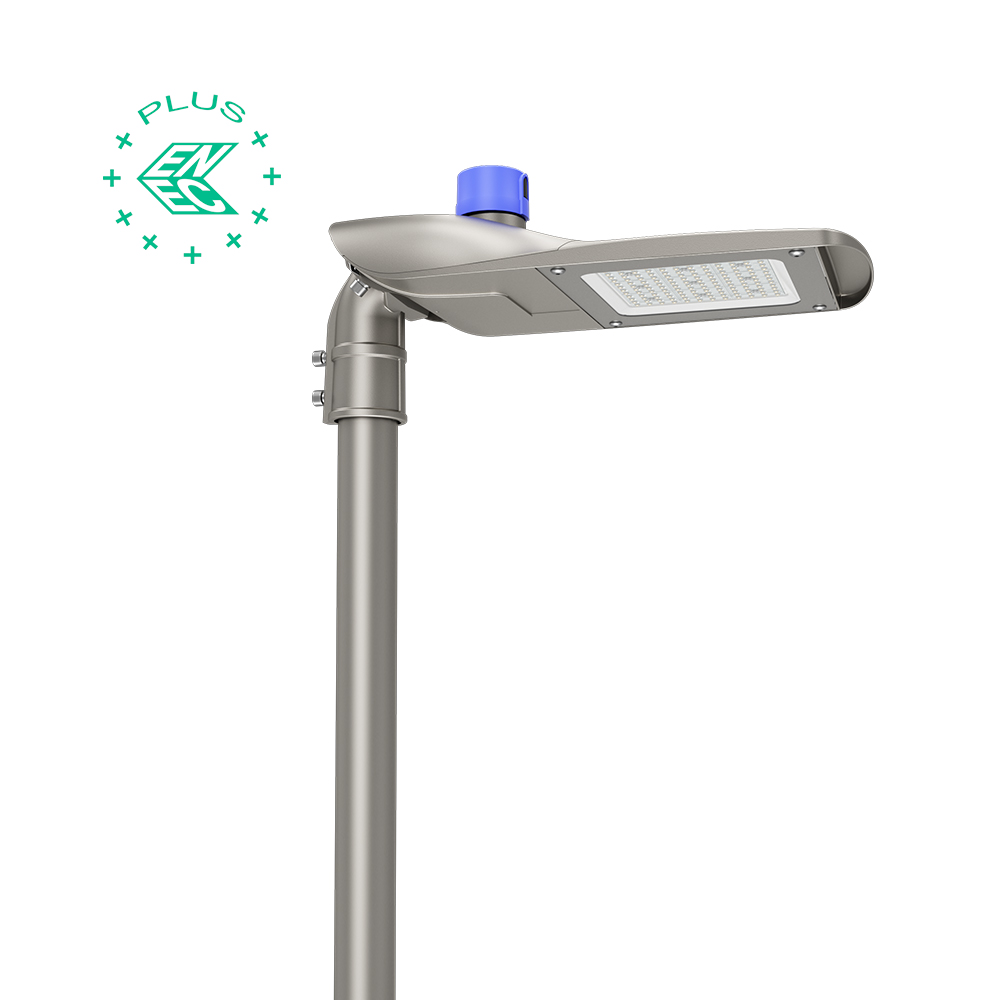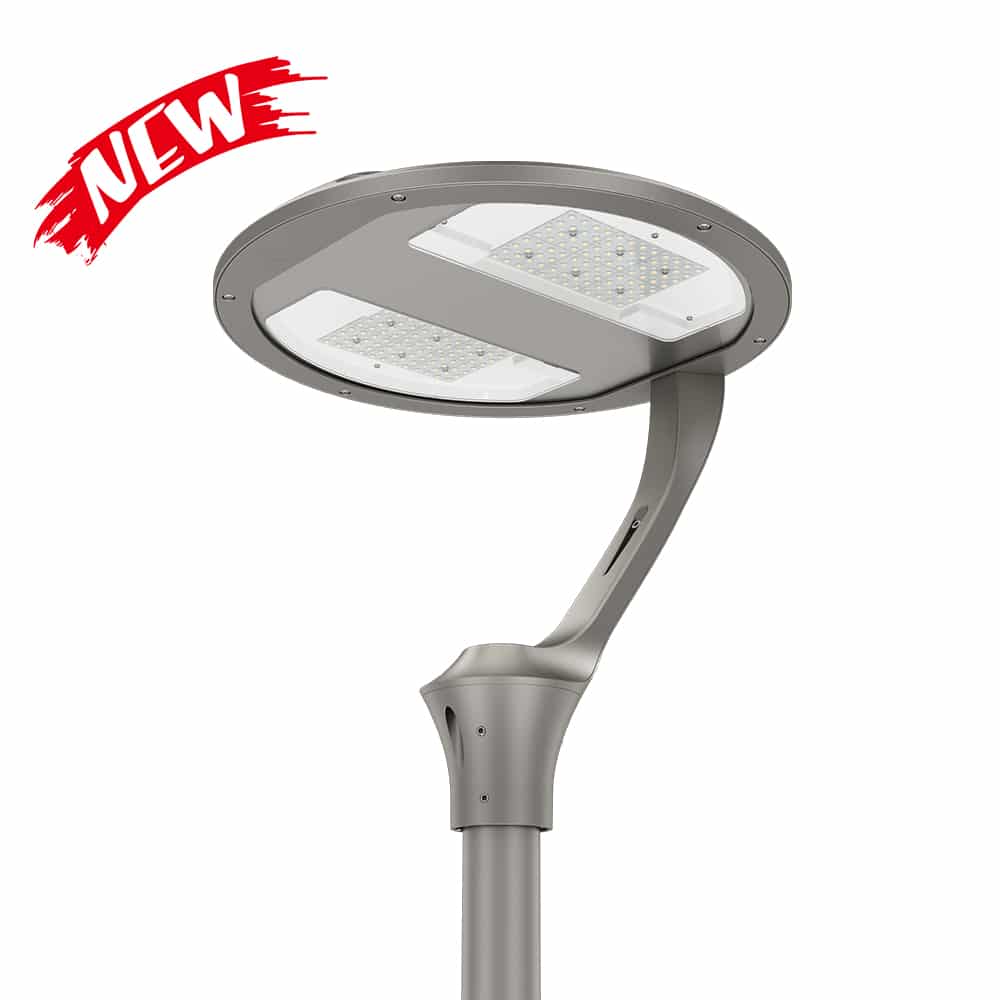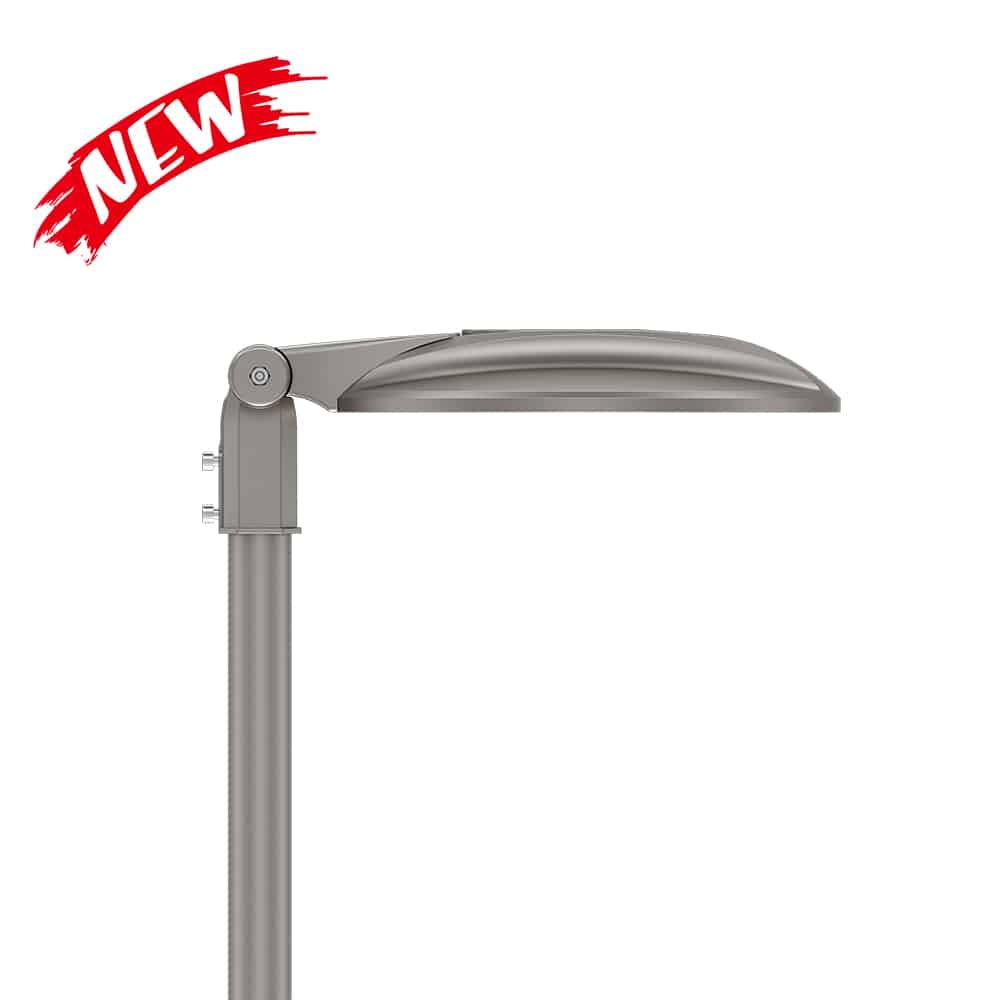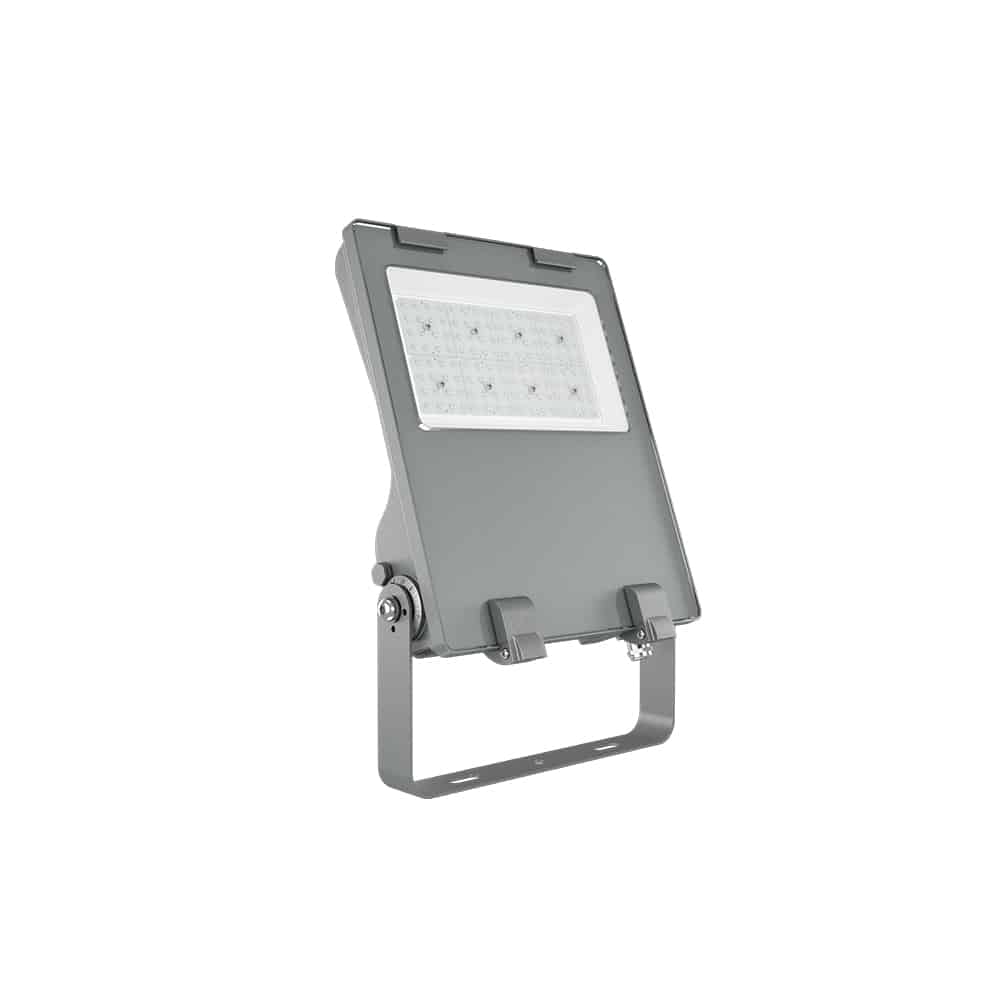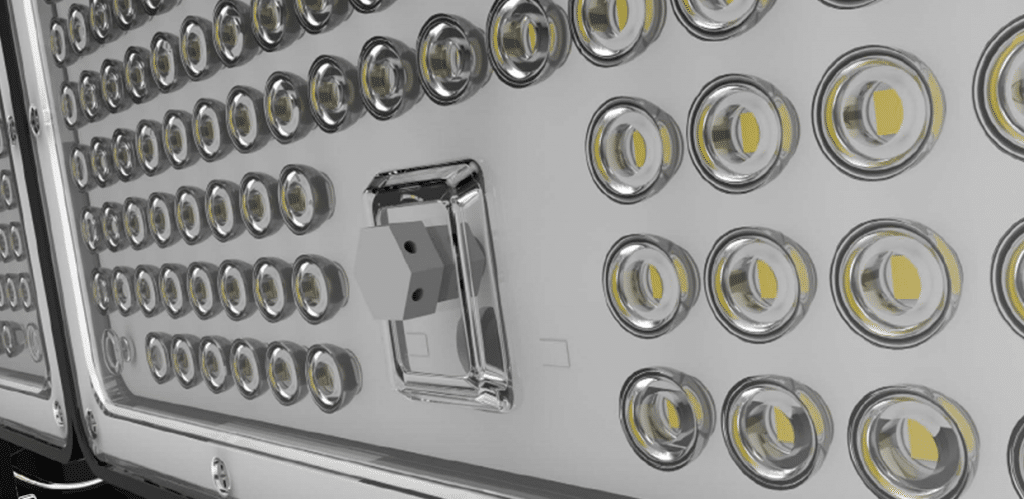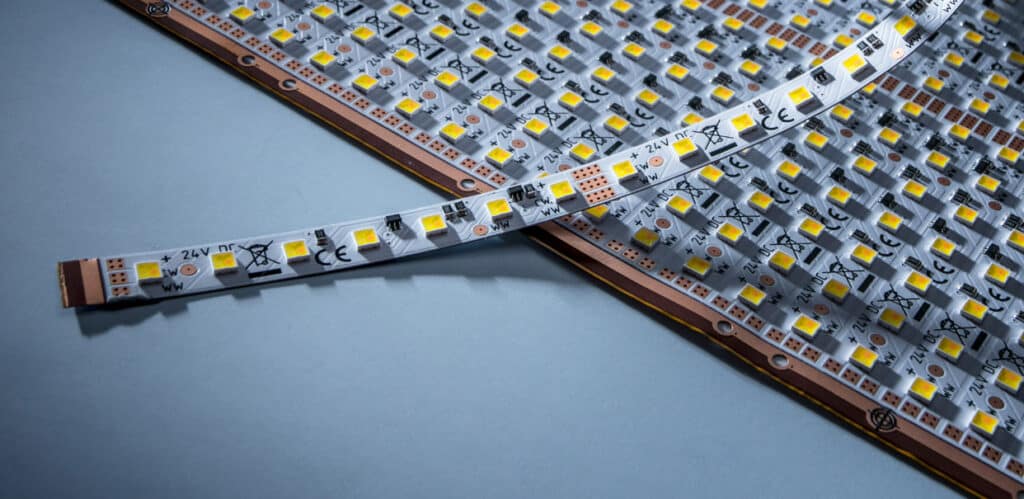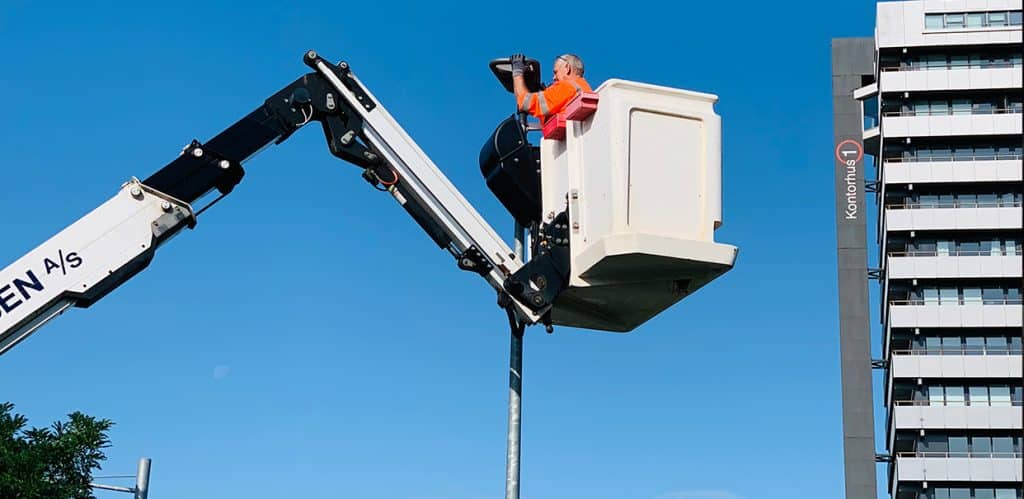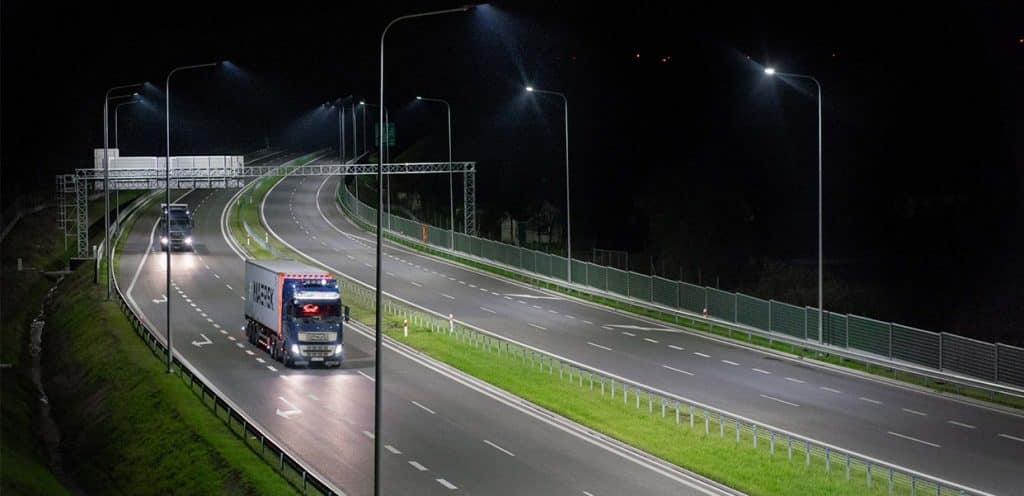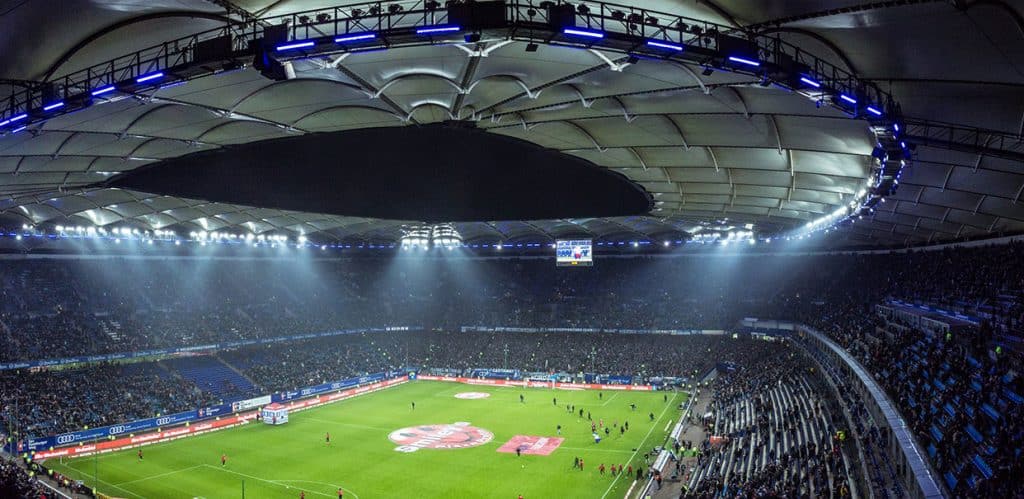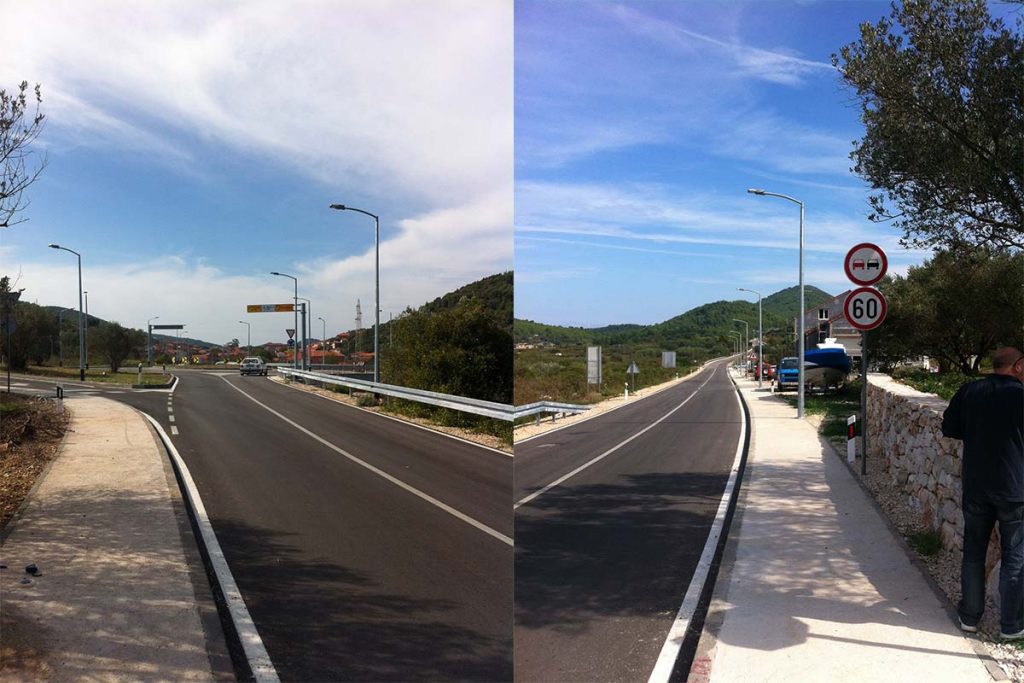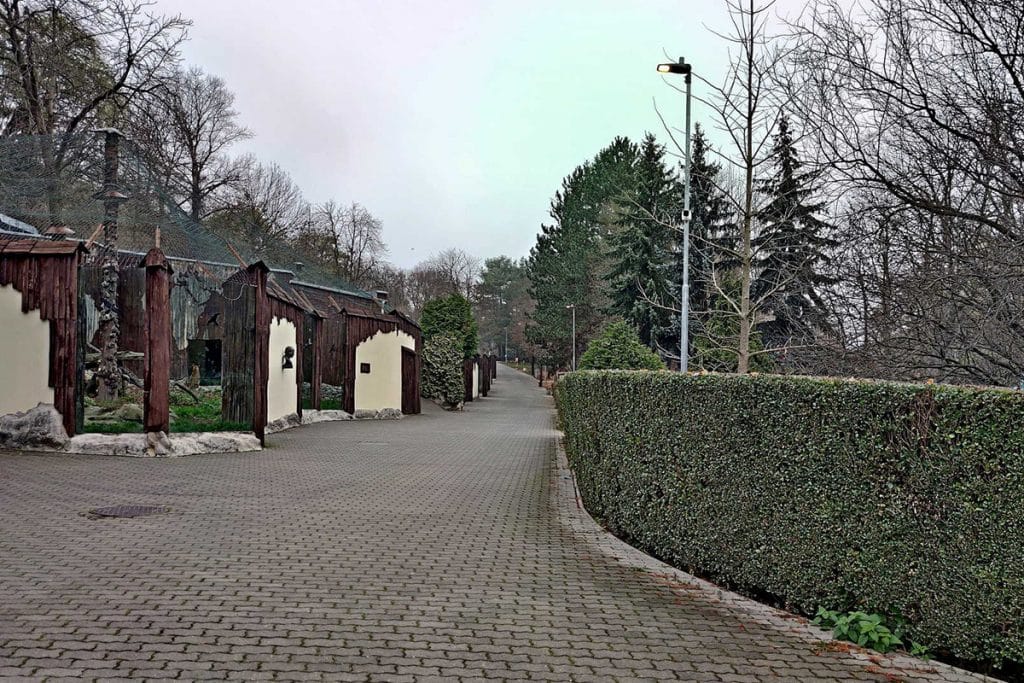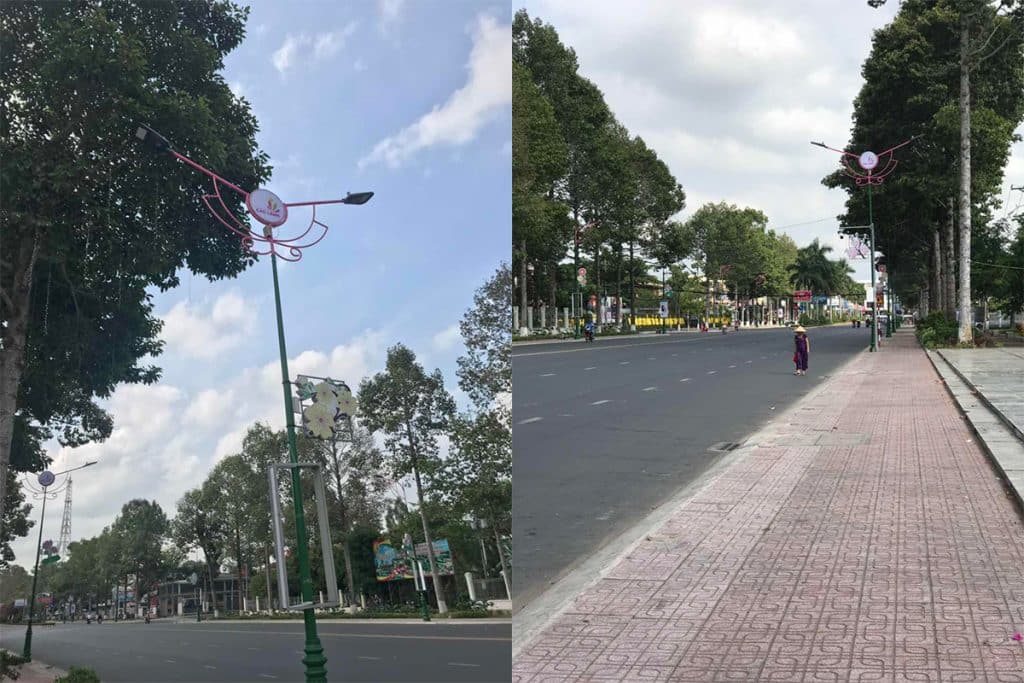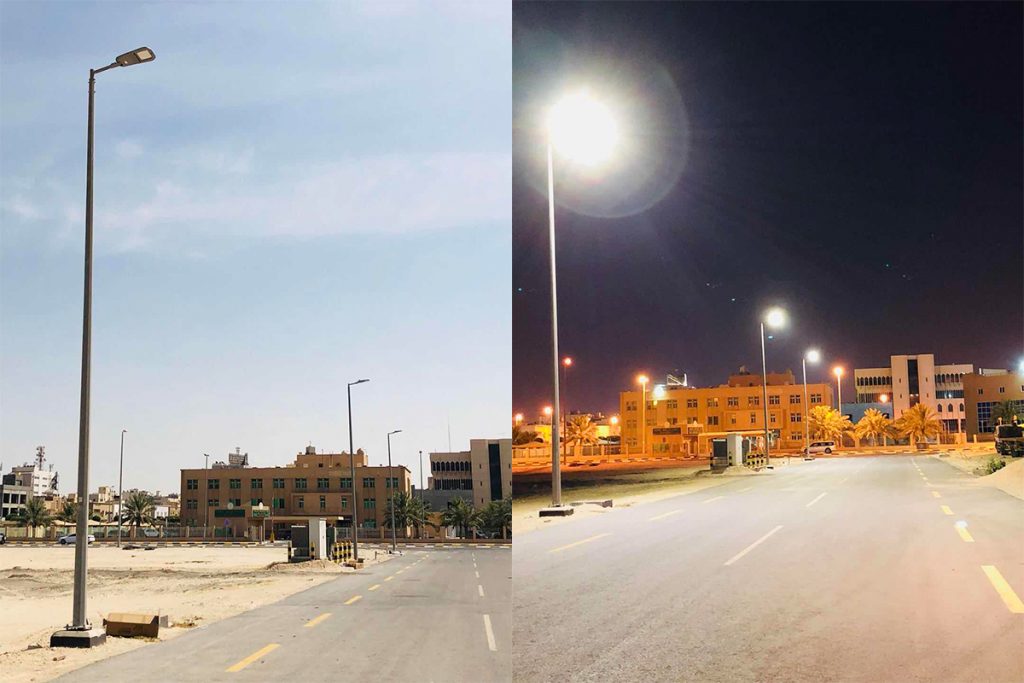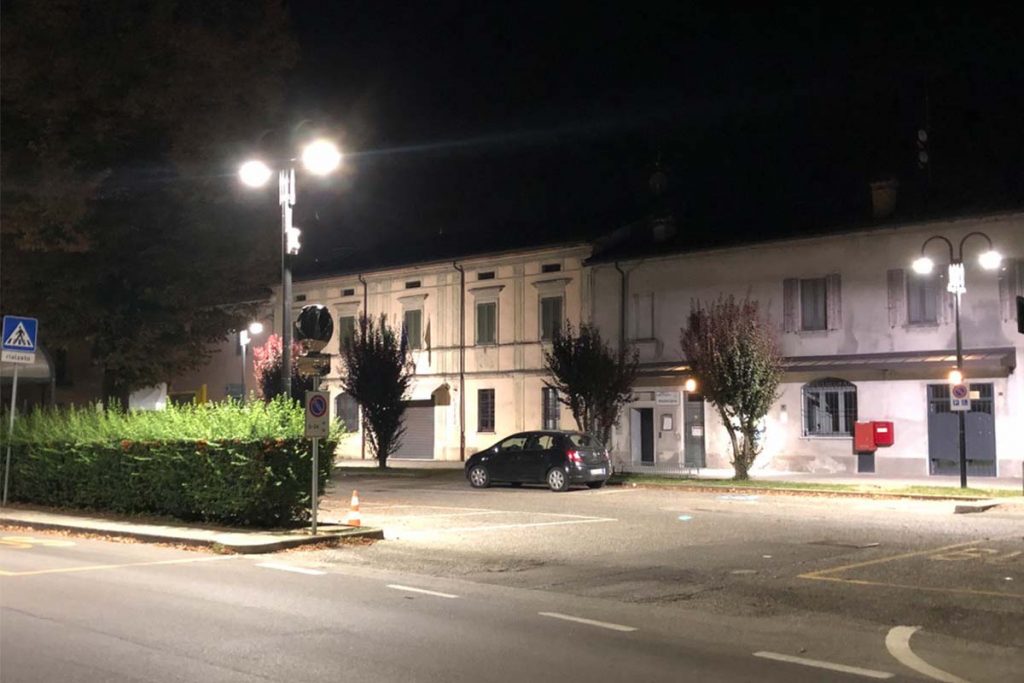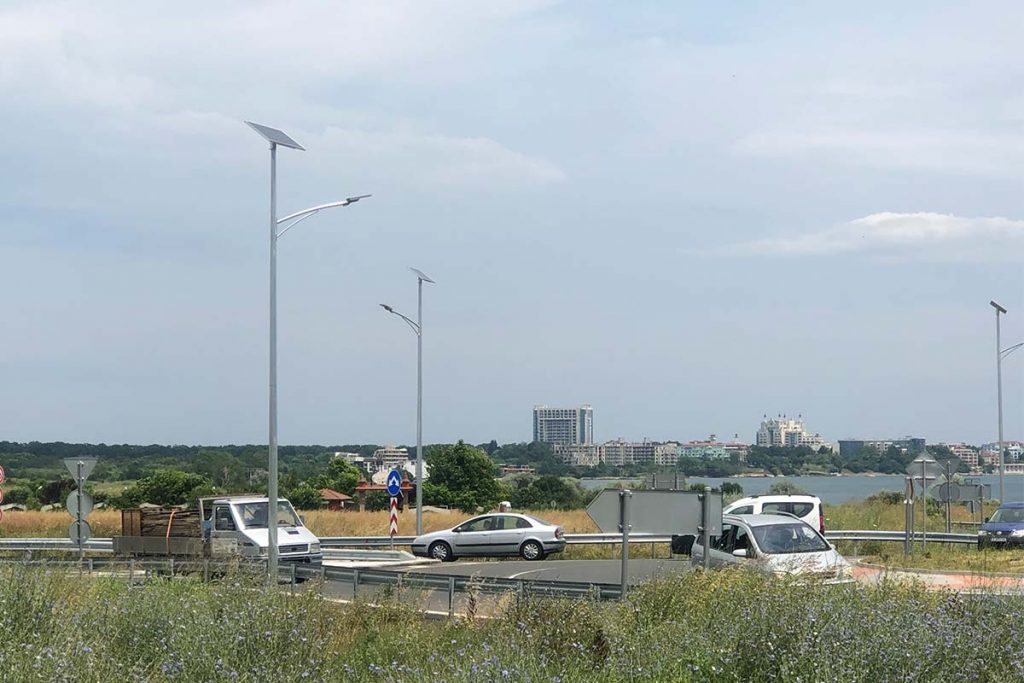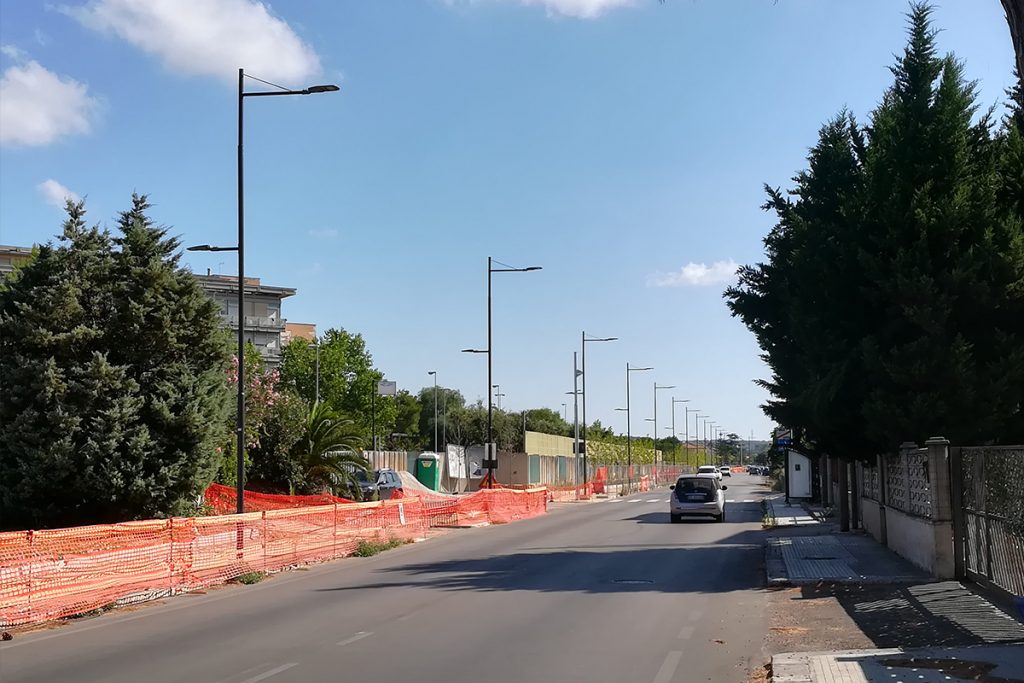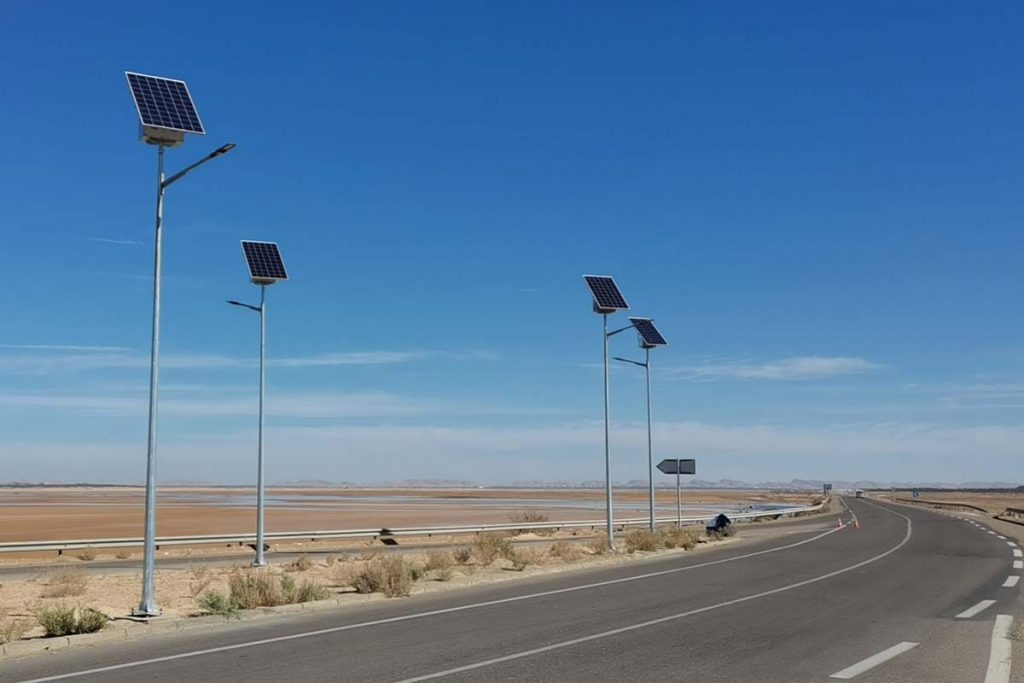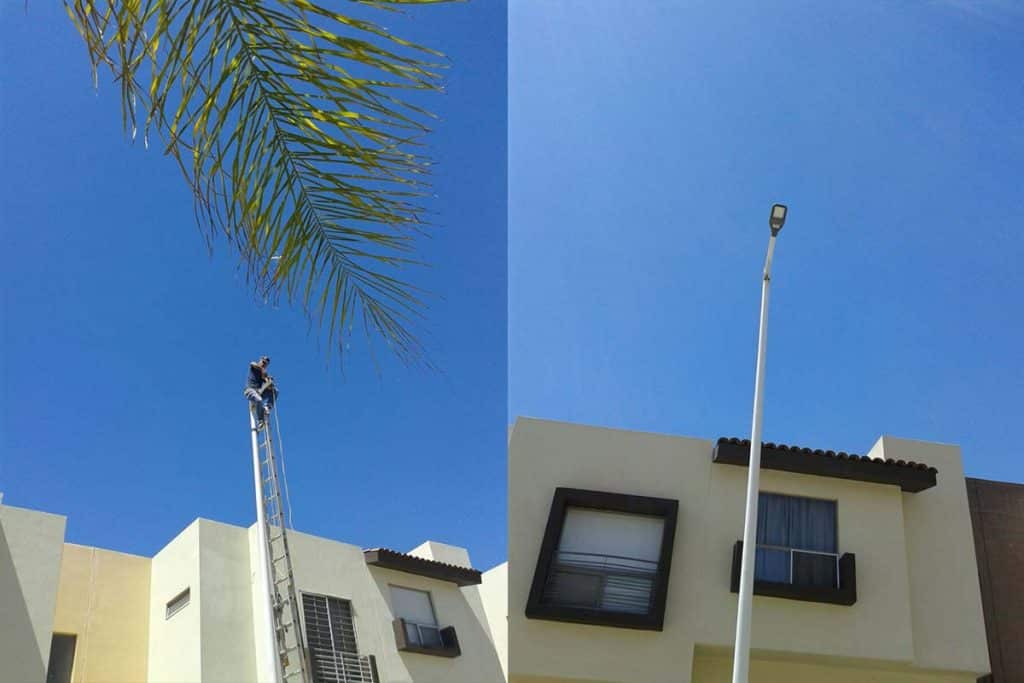Energy performance contract of street lighting solution
Energy performance contracting of street lighting solution
Introduction
Street lighting can account for 30-50% of a city’s total electricity consumption. In recent years LED street lighting technology has offered high cost savings and relatively short payback times. The introduction of new technologies will inevitably lead to the elimination of traditional lamps. Our preliminary estimate is that by 2030, nearly 90% of the currently used street lamps will be phased out, which means that they will not be available in the market. Municipalities therefore urgently need to act. In most cases, LED luminaire replacement requires high investment, which is a significant problem for many cities. Here, energy performance contracts (EPCs) are a viable solution: Energy efficiency investments are pre-financed and implemented by energy service companies (ESCOs). Annual savings in energy and maintenance costs cover investment and capital costs.
The EU project Streetlight EPC, funded by the Intelligent Energy Europe Programme, was launched in April 2014 with the aim of triggering market uptake of EPC through street lighting renovation projects. In this project, guidelines for the implementation of street lighting EPC projects were prepared for municipalities and ESCOs. They are available in their respective languages and in the specific context of the project area (including Germany, France, Italy, Austria, Czech Republic, Poland, Ireland, Sweden, Slovenia, Macedonia, Spain). LED technology has developed very rapidly over the past few years. In many cases, LED street lights are now a very economically interesting street lighting retrofit option. The advantages of LEDs include high energy efficiency, long life (about 50000-100000 hours), low maintenance costs and high flexibility of dynamic light control systems. They also provide It provides better light color selection and allows precise light direction (suitable for animals’ night life). These advantages make LED street lights have good feasibility in EPC projects. However, these benefits can only be obtained if the overall system is well planned. This document summarizes the information in these guides in English.

Why choose EPC – benefits of EPC project
The main obstacle faced by most cities in Europe is the significant upfront investment required to replace street lighting with LED technology. In many cases, Energy Performance Contracts (EPCs) can provide a solution to overcome this barrier. An EPC is a contractual arrangement between a client, such as a municipal authority, and an Energy Service Company (ESCO) that provides energy efficiency measures. The ESCO funds and implements energy efficiency investments, such as retrofitting the street lighting system of an entire city or selected projects with LED technology. The ESCO guarantees energy savings, and the municipal authority uses the energy savings generated each year to repay the ESCO’s upfront investment and capital costs. After the contract period ends, the client (municipal authority) benefits from the energy and cost savings. From this, we can see that EPCs provide the necessary funding for LED replacement projects and, if necessary, also offer technical expertise and manpower. It is a low-risk approach to financing and delivering energy efficiency improvements and renewable energy projects.
Despite the enormous potential of EPCs, many regions have yet to witness significant development in the EPC market. Therefore, it is necessary to explain EPC projects. Currently, the adoption of street lighting retrofitting through EPCs provides a good “learning platform,” and the pressure to phase out outdated streetlights presents a unique opportunity for the development of the EPC market. The “Street Lighting EPC” project, funded by the European Intelligent Energy Programme, was launched in 2014. Therefore, we will use the application of LED streetlights in contract energy management as a starting point to provide a detailed introduction to the relevant knowledge of EPCs.
Steps in preparing and implementing a streetlight EPC project
Energy Performance Contract (EPC) is a method of managing and optimizing energy usage through contract agreements. It can help organizations achieve energy efficiency, reduce energy costs, and minimize environmental impact. Here are the general steps involved in contract energy management for road lighting applications:
Information gathering and assessment
Firstly, evaluate the areas in the city where lighting fixtures need to be replaced on the roads. This includes assessing the current status of the existing fixtures, such as the quantity, operational status, wattage, dimming capabilities, and pole conditions. Understand the energy (electricity) consumption of the replacement fixtures, potential energy-saving solutions, and the road conditions.
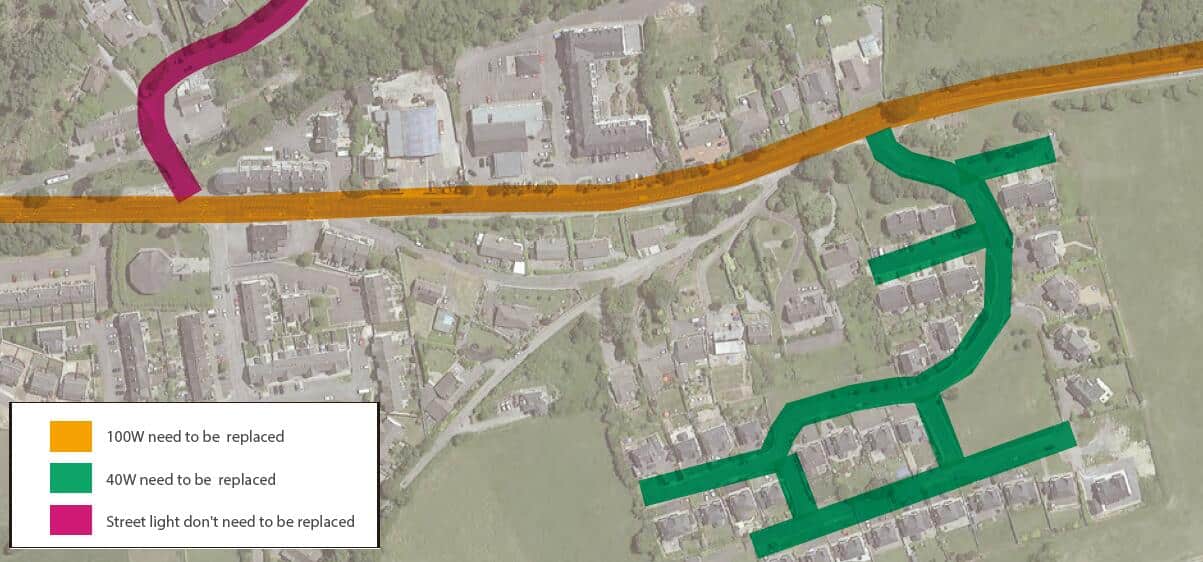
Setting energy-saving goals
With information on lighting fixtures, roads, and lamp posts in the area, we can calculate the wattage, quantity, lighting distribution and others of the fixtures. This information can be used to preliminarily determine the level of energy savings, and in combination with control systems such as timed dimming and smart controls, we can establish clear energy management goals.
Finding ESCO partners
Choose suitable partners, such as Energy Service Companies (ESCOs) or energy consulting firms, to assist in implementing the energy management plan. Based on the information from the previous steps, they will finalize the lighting solution ( View cobra head light fixture solution case ), including the number of fixtures, wattage, dimming, smart controls, and maintenance costs. Contracts will be signed between the municipal authorities and the partner ESCOs, clearly defining the responsibilities and obligations of both parties, including energy management goals, energy monitoring and reporting, rewards, and risk-sharing.
Implementing energy-saving measures
The partners will provide professional energy management services, such as energy monitoring, energy efficiency improvements, equipment maintenance, and optimization, to achieve the energy-saving goals. Regular monitoring of energy consumption, data collection, and report generation will help evaluate the effectiveness of the energy-saving measures and make timely adjustments to the plan.
Key criteria (technical specifications) for a street lighting refurbishment project
In the Energy Performance Contract project, we should pay attention to the following parameters of LED street lamps: Electrical power (wattage), luminous efficacy (light output = wattage x luminous efficacy), light color, expected service life, the control system (incl. ability to switch-on/switch-off and dimming), lighting distribution, heat dissipation, warranty period, datasheet and test certificates(such as EMC, LVD and structure). Taking into account the aforementioned parameters, the selection of LED street lights that align with project requirements and energy performance goals can contribute to enhanced lighting effects, energy savings, and reduced operational expenses. Let’s talk about it one by one as follows.
Wattage and lumen output
The primary advantage of using LED solutions in EPC projects is their high energy efficiency. LEDs can often achieve the desired level of luminous flux while operating at lower wattages. This ensures that LED street lights can provide sufficient brightness for road lighting while maximizing energy savings. By utilizing the lowest wattage (lumen output) possible, more energy can be conserved, reducing the time required to recover the upfront investment of the EPC. Finally it is important to clarify whether the lumen output refers to the LED chip or the entire LED luminaire. Here is an example of the average lux level for a 20W LED light at different installation heights:
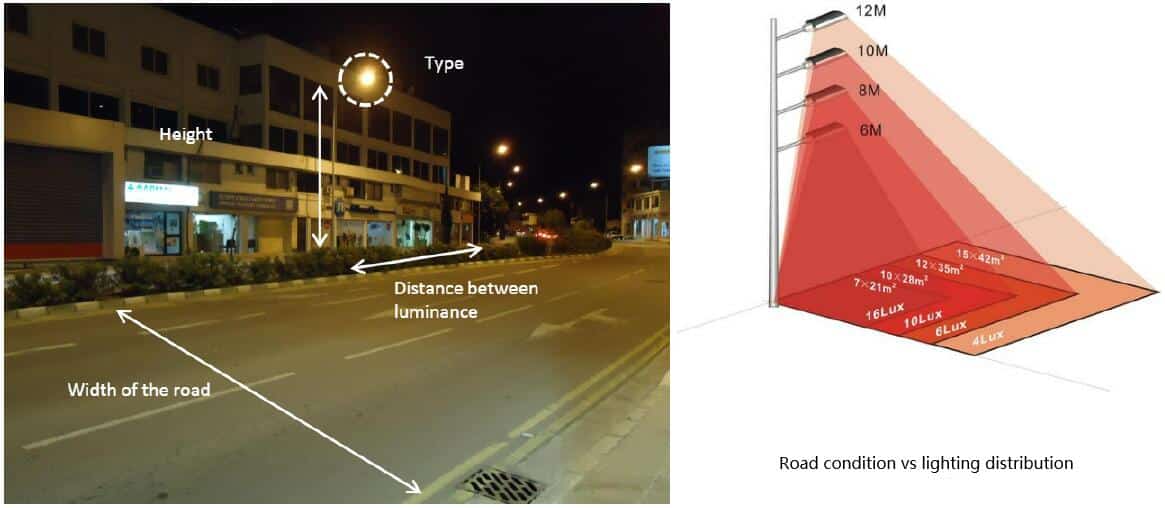
CCT and CRI
Color temperature refers to the color of light emitted by LED lamps. In road lighting, the commonly used color temperature range is from 3000K to 5000K. Choosing the appropriate color temperature based on road and environmental requirements can provide comfortable lighting effects. Currently, lower color temperatures(2200K) are becoming increasingly popular, but it’s important to note that lower color temperatures often result in slightly lower light efficiency for LEDs.
CRI (Color Rendering Index) is a metric used to measure the ability of LED lights to accurately reproduce the colors of objects. A higher CRI value indicates that LED lights can more accurately render the colors of objects. In road lighting, selecting LED street lights with higher CRI values can enhance visual effects and safety. However, it is also important to consider that higher CRI values often mean slightly lower light efficiency for LEDs. Therefore, CRI 70-80 is a suitable range for road lighting applications.
Luminous efficiency
In EPC projects, the light efficiency of lighting fixtures is considered, which refers to the amount of visible light produced per unit of power consumed. Light efficiency is associated with the energy efficiency standards of LED street lights and is an important indicator of their energy utilization efficiency. Choosing LED street lights with high light efficiency can reduce energy consumption and achieve energy savings. Although high light efficiency may result in higher upfront costs for the fixtures, in EPC projects, higher light efficiency means greater energy savings, allowing the saved energy to cover the initial investment as quickly as possible.
Lifetime and maintenance
Understanding the lifespan of lamps is crucial, and LED lamps generally outlast traditional lamps. Long-life LED street lights not only reduce maintenance and replacement costs but also provide reliable lighting effects. Manufacturers typically promise a service life of up to 100,000 hours, which usually refers to the lifespan of LED components. LED power supplies are assumed to have a very low probability of sudden failure
What if we can prove that the LED components can reach a lifespan of 100,000 hours? The main measure is the luminous flux attenuation rate. The luminous flux gradually decreases during the product’s service life. To ensure the lighting system meets the required standards, we need to select LED street lights with a higher wattage (higher luminous flux) during installation. Therefore, a lower luminous flux attenuation rate is more suitable for LED street lights. For example, “L70B50“>100,000 hrs means that “L70”>100,000 hrs, indicating that the lamp will still emit at least 70% of the light at the end of the specified 100,000-hour lifespan. Similarly, “L90B50”>100,000 hrs means that “L90”>100,000 hrs, indicating that the lamp will still emit at least 90% of the light at the end of the specified 100,000-hour lifespan. Clearly, the latter option is more suitable for our EPC project. In this case, we only need to set the initial luminous flux of the lamp to the target luminous flux divided by 0.9. However, for the former option, the coefficient of 0.9 should be changed to 0.7 when selecting the luminous flux of the lamp. This means more wattage is required to maintain the required illuminance/brightness of the road throughout the project cycle and meet the corresponding lighting standards. Alternatively, an electronically controlled luminous flux compensation system can be used. This system keeps the luminous flux approximately constant during the device’s service life. For more information, please refer to the CLO function.
Lighting distribution
Lighting distribution refers to the way light spreads or disperses in an area or space. It encompasses the pattern and uniformity of light emitted from a lighting fixture and how effectively it illuminates the intended target area. Proper light distribution ensures that the lighting device provides even and uniform light coverage in the designated area, enhancing visibility and safety for pedestrians ( Standard and requirements refers to pedestrian lighting ) and motorists. Different road conditions may require different light distributions, meaning that street lights with the same lumen output but different lighting distribution can have varying lighting effects on the same road. This aspect is also a key factor in assessing the energy efficiency (energy-saving efficiency) of lamps. Additionally, appropriate light distribution contributes to visual comfort by reducing glare and enhancing aesthetics.
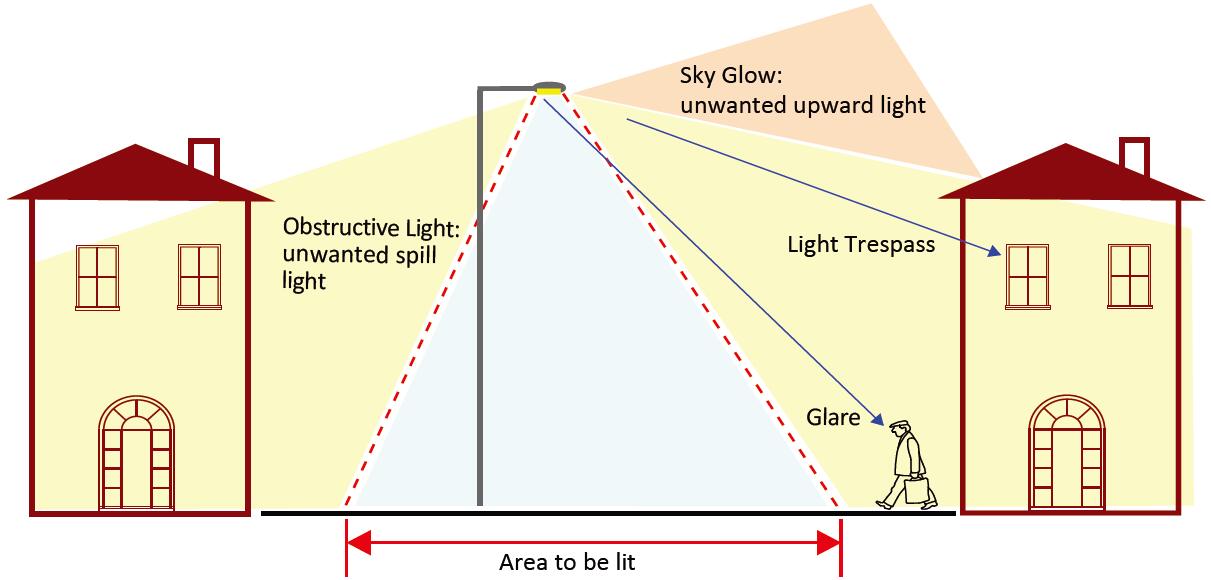
Thermal management
A portion of the electricity consumed by an LED is converted into heat. Effective heat dissipation is crucial for extending the lifespan of the LED and is therefore an important quality attribute. Therefore, it is necessary to use high-power LEDs that are equipped with suitable cooling fins or other heat dissipation components.
Dimming and remote control
If conditions permit, LED street lights can be equipped with dimming and control functionality, allowing for adjustable lighting levels based on specific needs. Common dimming methods include photocell control, Motion Sensors, Time-Based Dimming, and intelligent control systems. These technologies either turn off unnecessary lights or reduce the lighting level during periods of low nighttime traffic, resulting in further energy savings.
Photocell Control: Consider whether the LED street lights support photocell control technologies such as light sensors or time controllers. These technologies enable the adjustment of lighting brightness or timing as needed, leading to additional energy savings.
Motion Sensors: By incorporating motion sensors into LED street lights, they can detect movement and adjust the light output accordingly. When no activity is detected, the lights can dim or turn off, reducing energy consumption.
Time-Based Dimming: Lighting control systems can implement dimming based on specific time schedules. For example, during periods of minimal nighttime traffic, the lights can be dimmed, while brightness can be increased towards morning to ensure driver safety. By doing so, the lights don’t need to output at 100% throughout the entire night, resulting in reduced energy consumption without compromising safety.
Remote Control and Monitoring: LED street lights with remote control and monitoring capabilities can be centrally managed and monitored within a lighting network. Common applications include technologies like Zigbee and LoRa, which allow for real-time brightness adjustment and provide real-time monitoring of energy consumption, fault detection, and performance analysis. While these technologies are valuable for EPC projects, it’s important to note that they come with relatively higher costs.
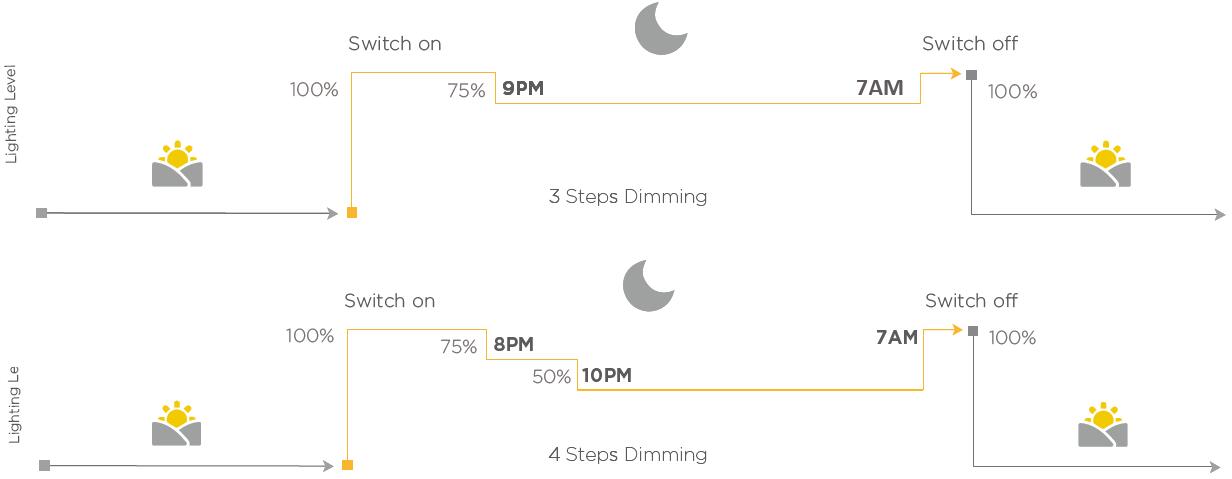
Warranty and spare parts
The warranty period and availability of spare parts should be clearly defined. The warranty period for LED street light projects should be explicitly stated, as it represents the supplier’s and ESCO’s commitment to quality control and performance assurance of their products. It establishes the responsibilities and rights of both parties and helps the municipal authorities manage risks effectively. Moreover, ensuring the availability of spare parts throughout the planned lifespan of the luminaires is crucial. This ensures smooth maintenance of the luminaires and minimizes additional costs. In EPC projects, modular structures are preferred as LEDs and electronic modules can be easily separated, eliminating the need to replace the entire luminaire in case of a failure.
Datasheet and certificates
Previously, we mentioned the meanings and requirements of wattage, luminous flux, luminous efficacy, color temperature, expected lifespan, control systems (including photocell, dimming, smart wireless control), and warranty. We believe that municipal authorities should request a specification sheet from the ESCO that includes these parameters, as well as certificates or reports proving that the luminaires meet the respective requirements. This ensures that the lighting solution complies with the required quality and performance standards.
ZGSM street lights used in EPC
ZGSM street lighting solution
Since its establishment in 2005, ZGSM has been committed to the development of high-efficiency LED lamps. Because of high efficiency of our street lighting solution, it’s suitable for EPC project. At present, our company has made good progress in the development of LED street lamps. Below we list ZGSM LED street lights with different luminous efficacy in different periods.
- ZGSM D2 series
- Developed on 2009
- CE certificated
- Unavailbale, continued by H series
- ZGSM H series
- Developed on 2013
- CE and ULcertificated
- Module design with UL certificate
- ZGSM K series
- Developed on 2016
- CE, ENEC certificated
- Full die-casting auminium
- ZGSM Rifle series
- Developed on 2020
- CE, ENEC+ certificated
- Tool-less design with full sets of certificates
- ZGSM Falcon series
- Developed on 2022
- CE, ENEC certificated
- ZGSM new generation 20th street light
Summary
Street lighting plays a crucial role in ensuring traffic and public safety, but it consumes a significant amount of electricity and requires substantial funding. In cities with outdated and inefficient systems, street lighting can account for 30-50% of the total electricity consumption. To address the financial challenges associated with street lighting, the adoption of LED street lights with an Energy Performance Contracting (EPC) solution has proven effective. This article focuses on the rationale for choosing EPC, key considerations for EPC implementation, and important factors to consider when applying EPC to LED road lighting. These insights serve as valuable guidance for suppliers, Energy Service Companies (ESCOs), and municipal authorities. Suppliers are encouraged to provide ESCOs and municipal authorities with efficient and reliable LED lighting products that meet their requirements. ESCOs, in turn, should ensure that the selected LED luminaires perform as expected by assessing their performance throughout the project and conducting necessary maintenance activities. By collaborating with ESCOs, municipal authorities can enhance energy efficiency in urban lighting, thereby delivering high-quality lighting services to citizens that adhere to energy efficiency standards and regulatory requirements.
Rated Products
Related Blogs
Related Cases
People also ask
Author introduction

Hello Customers,
My name is Taylor Gong, I’m the product manager of ZGSM Tech. I have been in the LED lights industry for more than 13 years. Good at lighting design, street light system configuration, and bidding technology support. Feel free to contact us. I’m happy to provide you with the best service and products.
Email: [email protected] | WhatsApp: +8615068758483

